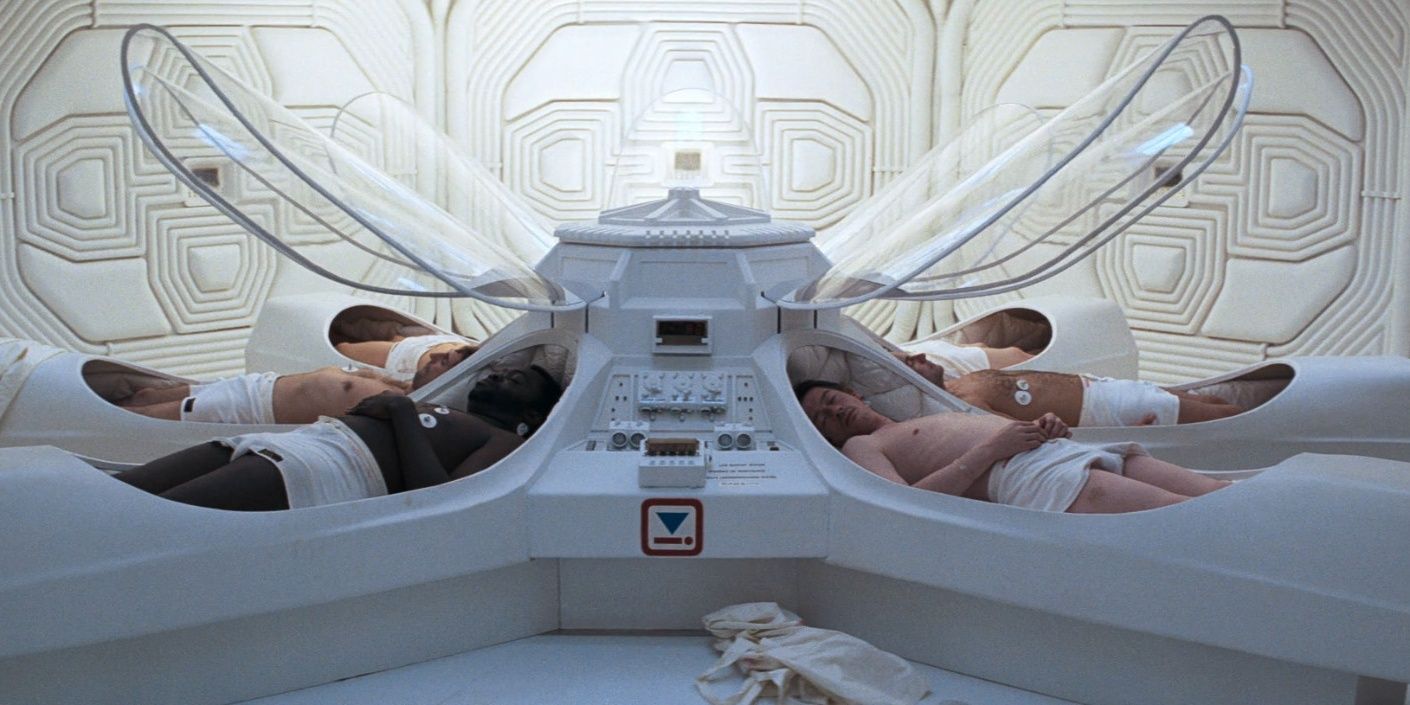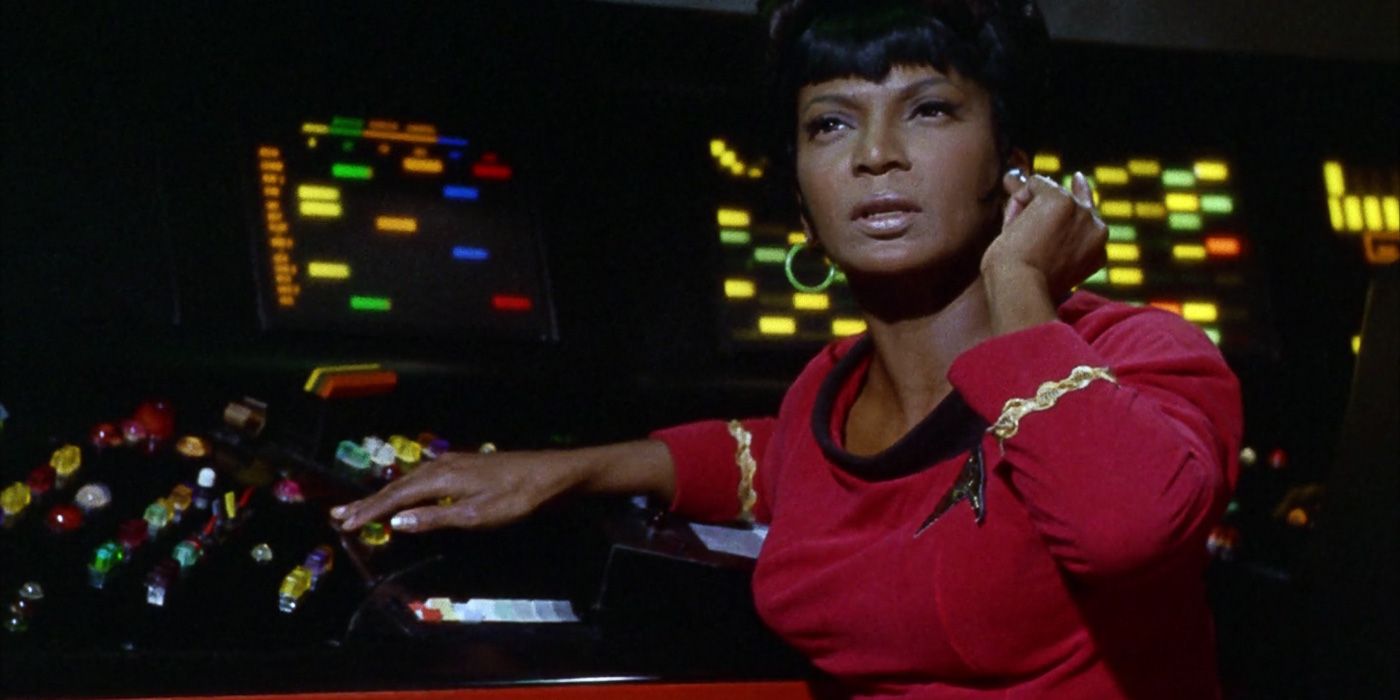Even if the stories are outlandish and the characters are aliens unlike anything humans have encountered in real life, sci-fi universes have to get the technology right to make for a compelling experience. Grounding stories in consistent and well-justified technology, like Star Trek and The Expanse, have done, is key to a believable sci-fi world.
As for how likely the technology of these shows, movies, and games is to becoming a reality, the answer to that can be varied but often surprisingly positive. With real-world technology advancing all the time, these are just some of the sci-fi universes that seem more believable than ever.
Cyberpunk 2077's Cybernetic Enhancements Are Plausible
Cyberpunk 2077 was many people's first exposure to the long-running dystopian world of the Cyberpunk TTRPG, and it immediately throws a lot of fantastical new technology the player's way. Perhaps the most prominent example is cybernetic enhancements that allow humans to do far more than they were previously capable of.
In the real world, human-machine cyborgs are very much real and much of the application so far has been for aiding people with disabilities. Some of the examples highlighted in Futurism include bionic limbs that can even allow the user something resembling a sense of touch as well as a head-mounted antenna that allowed the colorblind artist Neil Harbisson to hear colors.
WALL-E's Robot Solution To Pollution Could Come True
In the world of WALL-E, the worst has already come to pass as humans are forced to leave an earth that's been rendered uninhabitable due to pollution and settle for life aboard Starliners. Aboard the spacecraft, humans have become overly reliant on technology, and addictions to screens and junk food have only gotten worse.
With Time reporting that screen usage sky-rocketed during the lockdown period of the Covid-19 pandemic and has continued at high levels, it's easy to imagine technology adapting to compensate for less active lifestyles as a result. On top of that, companies like Recycleye promise to use AI and robotics to aid in the future of waste disposal, much like how WALL-E's model was created for this purpose.
The Expanse Grounds Its Fascinating Story In Some Real Science
One of the biggest issues with the plausibility of science fiction is that faster-than-light travel remains an impossible dream in the real world, meaning it would take an inordinate amount of time to travel through space. The Expanse solves this by restricting humanity's travels to the earth's solar system, although the science of the Epstein Drive remains questionable for now.
On the other hand, the hand terminals in the show, their replacement for the real world's almost ubiquitous smartphones, seem completely plausible given how cloud technology is advancing. Finally, Syfy reports that The Expanse's railguns could soon be a reality as the U.S. Navy ran tests on a similar electromagnetic weapon.
Mass Effect's Military Technology May Predict The Future
Whilst Mass Effect doesn't always remain grounded in real science, with faster-than-light travel just one of the more questionable elements added into the world to allow for better stories, it's fair to say the games have more thought to real-world physics than most.It'ss one of the things that makes Mass Effect an iconic game series.
The weapons, in particular, have a lot of thought put into how they would work. Fans including Kyle Hill from Nerdist on YouTube have broken down how some of the game's "element 0" electromagnetic weaponry works and how it's based on actual science. As with The Expanse's rail guns, Navy tests on a similar kind of weapon confirm its real-world potential.
The Tech In The Alien Franchise May Become Plausible
Whilst the titular alien might not quite come under the label of tech, there's some interesting technology on display in Alien. The planetary terraforming technology that takes decades in the series reflects NASA's estimation that if such a process was possible it would take long periods, perhaps even tens of millions of years. Likewise, Alien acknowledges that interstellar travel would mean long periods in transit.
It deals with this using stasis pods that essentially suspend the user's body in time until they wake up, a concept that's hardly new in science fiction. According to Science Focus, cryonics that would achieve a similar effect may still be a nascent technology, but it has a lot of interest from researchers, meaning advancements are possible in time.
Blade Runner's Doomed Synths Have Become More Plausible
With rogue androids and flying cars, the quintessential cyberpunk classic Blade Runner may have seemed ridiculously speculative when it was released but some of the technology seems significantly more realistic now. Flying cars may be no closer to coming to fruition but artificial intelligence and the technology behind lifelike robots are progressing at an alarming rate.
Additionally, the four-year lifespan of the synths in Blade Runner doesn't seem that wild considering planned obsolescence is at the heart of the technology industry now. Not only that but the real world already has extremely commonplace equivalents to the movie's Voight-Kampff test for discerning robots from humans in the form of Captcha and similar tests.
The Matrix Has Become Closer To Reality With VR
Humans one day being used as a source of energy as they are in The Matrix is unlikely to ever come true, with scientist Robert Hurt explaining in Esquire that it's simply impossible to get as much energy out as would be required to keep the body alive, but that doesn't mean all of the movie's technology is impossible.
With VR capable of more awesome immersive experiences than ever, some think humanity is on an inevitable march toward simulations that are indistinguishable from reality. Additionally, with the Metaverse being presented as a virtual space where humans can even work and own property, the ever-present simulation in The Matrix seems closer than ever.
Halo's Military Technology Is Surprisingly Grounded
Whilst Halo's iconic AI might have been aped in the real world by Microsoft's Cortana, the similarities between the two don't go much deeper than the name. Additionally, though a defense network in space was proposed as far back as Reagan's administration according to History, the plan never took off in the real world as the Halo Array did for the Forerunners.
Not all of Halo's technology is implausible, however. In the form of Warthogs and Scorpion tanks, the vehicles employed by the UNSC just seem a natural extension of the armored off-road vehicles and military tanks seen in the real world. Even more surprisingly, the BBC reports that real-world militaries are very much interested in creating supersoldiers, not unlike Halo's Spartans.
The Martian's Story Has Some Real Science Behind It
Simply by setting its story on Mars rather than deep in outer space, The Martian is more plausible than a lot of other science fiction as this is something humanity is interested in doing in the coming decades according to NASA. In the movie, the castcano survive by living in a special habitat that protects them from the planet's harsh conditions.
In the real world, many have already put thought into the creation of such living facilities with NASA holding a design competition for exactly that in 2019. Likewise, Digital Trends reports that there are plenty of sound ideas on how to produce water on Mars, meaning Mark Watney's ability to survive long-term is rooted in some real-world science.
Some Of Star Trek's Outlandish Technology Is Already Real
Whilst there have been exciting headlines from outlets like The Debrief regarding the discovery of a real-life "warp bubble" in recent years, the technology behind something like a Warp Drive in Star Trek is still in extremely early stages. That doesn't detract from the massive amount of technologies from Star Trek that now exist in the real world.
From tablets and live translation devices to things as simple as automatic doors, so much of the tech showcased in Star Trek's various iterations didn't exist when the show was made. Replicators and long-distance space travel might seem like a reach still but few would bet against the show at this point.











